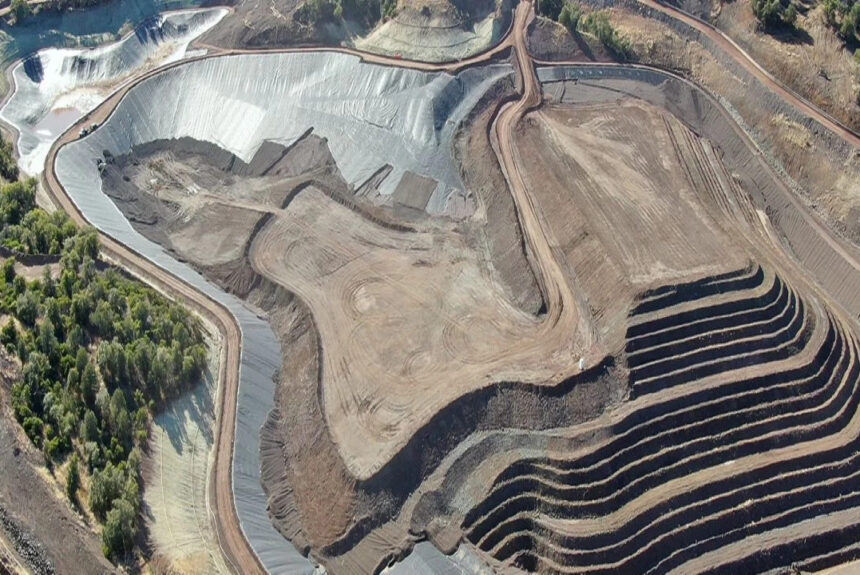The White House is granting the Hermosa critical mineral project, a Southern Arizona mining project near the US-Mexico border, special permitting status under an Obama-era law dubbed FAST-41 which was designed to improve the timeliness and efficiency to permit different energy and infrastructure projects.
>>>READ: How America Can Diversify its Critical Mineral Supply Chain
In a statement released on May 8, the Federal Permitting Improvement Steering Council, an independent federal entity composed of agency representatives from the Department of Energy, the Transportation Department, the Environmental Protection Agency, and the U.S. Forest Service, said that the $1.7 billion Hermosa Critical Minerals Project sponsored by Australian mining firm South32 had been awarded FAST-41 permitting coverage. The mining and metals company has the greenlight from the state of Arizona to begin the initial mining process but is still missing a federal permit from the National Environmental Policy Act (NEPA) to obtain full rights to the land.
If approved, the Hermosa mine would source zinc and manganese, two minerals designated critical according to the U.S. Geological Survey. The agency notes that manganese is a key ingredient in the development of electric vehicle batteries, while zinc is crucial in facilitating green technologies like solar and wind.
The move comes at a time when the nation’s domestic supply of critical minerals sits historically low. According to The Energy Act of 2020, “critical minerals” are defined as non-fuel minerals or mineral components essential to the economic or national security of the U.S. Moreover, critical minerals are characterized by their vulnerability to supply chain disruptions. The latest Geological Survey considers 50 mineral commodities “critical,” 15 more than when the survey was first created in 2018. According to a recent report from the Citizens for Responsible Energy Solutions, the U.S. is completely import-dependent for 14 critical minerals and greater than 50 percent-dependent for 17 other mineral commodities.
As Nick Loris recently stated in a testimony before the House Natual Resources Committee, increasing the supply of these minerals domestically is critical to meeting future energy demands. Policymakers can help the private sector meet these goals by investing in research and development efforts and modernizing the current permitting process for mining projects.
“The United States is currently highly reliant on imports and overseas supply chains for the resources found at Hermosa, which are pivotal for our clean energy transition. The Hermosa project could change all of this,” South32 Hermosa President Pat Risner said, noting that Hermosa is the only advanced manganese project nationwide that could produce battery-grade manganese to fulfill domestic demand for EV batteries.
The inclusion of Hermosa as the first mining project expedited under FAST-41 marks a critical turning point in the Biden administration’s approach to developing domestic energy sources. The administration has been notorious for its hesitation to jumpstart critical energy infrastructure projects, even when those projects were deemed essential to U.S. national security interests and would have been subject to a rigorous federal environmental review process. Instead, Americans have been left paying higher prices on basic goods like oil and gas, commodities which are often produced in countries with far worse environmental standards than our own.
According to a recent study from the House Energy & Commerce Committee, average household costs increased a whopping $10,000 since 2020, fueled by unbridled energy inflation prompted by the Russia-Ukraine war and restricted domestic production directly tied to the administration’s policies.
>>>READ: Building Green Infrastructure Requires More Efficient Permitting
Prioritizing an expedited regulatory process for critical energy projects like Hermosa should be the norm and not the exception. A more efficient permitting process is vital to bolstering U.S. energy security and decreasing dependence on foreign adversaries for energy and critical minerals. Unleashing our untapped energy potential is also essential to ensuring the American people have a steady supply of affordable, reliable, and clean energy.
To date, it takes an average of 4 to 5 years for the federal government to complete an environmental review. Even more startling, the standard permitting process for mines takes about a decade from start to finish, according to the U.S. National Mining Association.
There has been recent activity on Capitol Hill to reform the nation’s current permitting process. Senator Shelley Moore Capito (R-WV) recently introduced the RESTART Act while Senator John Barrasso (R-WY) has unveiled the SPUR Act. Both of these bills would streamline agency reviews of environmental impact statements and assessments and reduce the statute of limitations for NEPA-related lawsuits.
Congress would do well to work together and overhaul the nation’s outdated permitting system. Fast-tracking more critical projects like Hermosa and modernizing regulations would be a good place to start.
Nathalie Voit is a freelance content creator and a graduate of the University of Florida. She is an alumni of The Heritage Foundation’s Young Leaders Program.
The views and opinions expressed are those of the author’s and do not necessarily reflect the official policy or position of C3.
